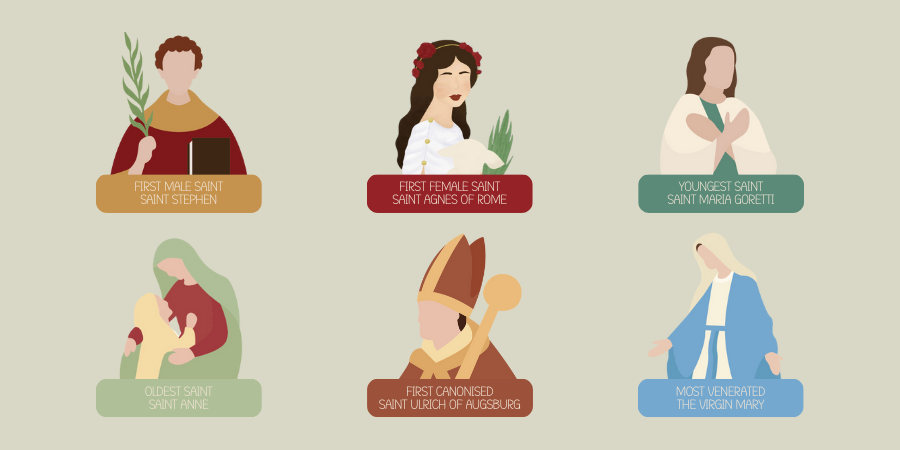Friday November 1st is All Saints Day, a day of remembrance celebrated in the Church every year, and recognised as the most inclusive feast day. When we remember the saints, both known and unknown, we also remember God’s saving grace in the midst of the disasters of history.
There are over 10,000 saints in the Catholic Church, who have each lived heroically virtuous lives, given their lives to others, and in cases, been martyred for their faith. They each became a saint through a specific process, first being recognised as ‘Venerable’, then ‘Blessed’, and finally, a ‘Saint’.
To first be given the title ‘Venerable’, the Pope must acknowledge that the individual had lived a heroically virtuous life, or offered their life to the faith and others. The next title of ‘Blessed’ comes after a miracle has been recognised through the intercession of the individual. This then allows for the stage of Beatification. After Beatification, a second miracle must be performed through their intercession to receive the final title, ‘Saint’.
The idea of All Saints Day first began as commemorating martyrs on the anniversary of their deaths, but due to growing numbers, the common day for all saints was established November 1st. It is followed by All Souls Day on the 2nd, which emphasises the connection between the living and the dead in the Catholic community. November is also recognised as the month of Remembrance.
FUN FACTS:
- First male saint – Saint Stephen
- First female saint – Saint Agnes of Rome
- Youngest saint – Saint Maria Goretti
- Oldest saint – Saint Anne
- First canonised – Saint Ulrich of Augsburg
- Most venerated – The Virgin Mary

